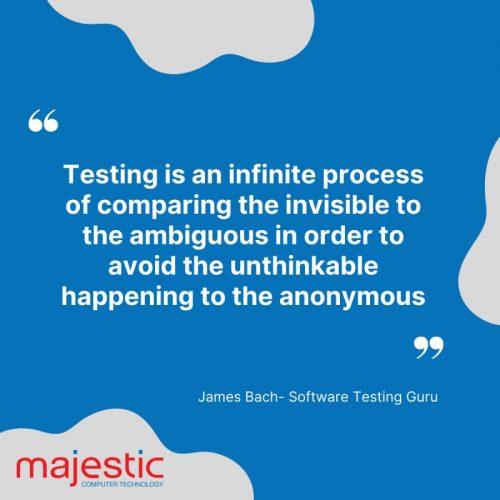Is your organisation implementing technology holistically?
Over the last two weeks, I’ve been speaking a lot about what IT best practice looks like. But how does an organisation move toward it? One of the most common errors is to think ‘IT’, and thus automatically think ‘Technology’. However, technology is not the answer, it’s only a tool. The organisation that focuses on business objectives and needs first then finds the solution to fit those needs, is the organisation that moves toward best practice.
Testing, if done at all, is almost always only completed when changes are implemented., either through the implementation of new solutions, or upgrades to existing ones. Testing, however, should be an infinite process because change is the only constant in any situation. Even if your technology doesn’t change, your business, your team, your clients and changes forced by external factors are all occurring around it. Through testing, you can identify inefficiencies and security risks and have a chance to address or amend them before they become problematic.
What’s the best method for an organisation to facilitate change from where they are now towards best practice? It requires very careful consideration of business and operational processes, and the level of maturity the organisation in question has currently achieved for both. It requires a deliberate focus on what the organisation does to underpin both the acquisition and retention of talent. It requires oversight of how the organisation ensures that it continues to retain its clients or its members. At the same time, it requires insight and understanding into what the organisation needs to achieve in order to grow. Whatever that kind of growth or whatever their objectives happen to be, how do we ensure that we keep all those pieces together, working in unison to achieve the right outcome at the right time? And how do we ensure that making an investment in a certain area is not going to undermine earlier investments or future prospects in another area?
We can only ensure this by looking at any organisation as a living whole organism. That means more than just looking at it as a sum of the parts and making sure that the parts stay together. It needs a holistic view and an equally holistic solution. When we do implement a solution, we need to ensure that we don’t just test it at the outset. Instead, we should continue to invest in testing those solutions over the course of the life of the technology and the life of the organisation. Why? Because regularly testing, not once every twelve months or every two years, but as frequently as appropriate, means our chosen solution can continue to be measured against the organisation’s objectives to ensure it’s still meeting its needs. We need to periodically ask ourselves:
- What was the benefit we were expecting to get out of that particular investment in a particular technology?
- Did we deploy it successfully? Are we managing it well now that it’s live?
- What were its anticipated values and benefits? Did we get the right outcome subsequent to implementing it? What could have been done better?
- Have any operational or organisational changes occurred since an implementation that requires adjustments to ensure it’s still providing maximum benefit?
Following those steps on an ongoing basis is absolutely critical to achieving the maximum outcome from technology investment and to ensure that ultimately the organisation heads towards best practice.
The implementation of technology solutions to businesses isn’t new. In fact, it’s as old as the technology industry itself. And yet, we continue to see large scale failure across all industries when it comes to the purchase and implementation of technology. Why? Sharmila Chatterjee, MIT-based B2B marketing expert, states that this is because organisations don’t consider their business as a whole when making these technology investments. By considering all aspects of your business, even the social aspect, you can generate far more impactful technology outcomes. This is what will take your organisation to the best IT practice level.
This article, ‘10 principles for modernizing your company’s technology, published in ‘Strategy-Business’, highlights the key principles all organisations need to address when looking to achieve a best practice level with their technology approach. It emphasises the importance of understanding strategy first, designing for future as well as current needs, and ensuring that the business needs are prioritised ahead of the tech itself.



